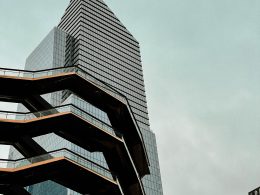Sustainable Real Estate Development on the Rise in the US
The real estate industry in the United States is experiencing a major shift towards sustainability, with developers incorporating eco-friendly features into new buildings and renovations alike. This trend is being driven by a variety of factors, including increased consumer demand for environmentally responsible living, government incentives, and the potential for cost savings over the long term.
One of the primary ways that real estate developers are embracing sustainability is by designing buildings that are energy-efficient and use renewable resources. This includes incorporating features such as solar panels, energy-efficient HVAC systems, and high-efficiency lighting. By reducing energy consumption, these buildings can save money on utility bills over time and help reduce the carbon footprint of the building.
Another trend in sustainable real estate development is the use of recycled materials and sustainable building materials. Many developers are incorporating recycled content into their buildings, such as using reclaimed wood or recycled steel. Additionally, sustainable materials such as bamboo and cork are being used for flooring and other finishes. These materials not only reduce waste but also promote healthier indoor air quality and minimize the use of toxic chemicals.
In addition to energy-efficient design and the use of sustainable materials, real estate developers are also incorporating green spaces and outdoor amenities into their projects. Rooftop gardens, green walls, and community gardens are becoming increasingly popular features of new developments. These features not only provide benefits such as improved air quality and reduced urban heat island effects, but also promote a sense of community and connection to nature.
The rise of sustainable real estate development is being driven in part by government incentives at the federal, state, and local levels. For example, the US Department of Energy offers tax credits for developers who incorporate energy-efficient features into their buildings. Many states and municipalities also offer incentives for sustainable building practices, such as expedited permitting or density bonuses.
Finally, consumer demand is a major factor in the rise of sustainable real estate development. Surveys have shown that many Americans are willing to pay more for eco-friendly homes and apartments. Additionally, businesses and organizations are increasingly seeking out sustainable office spaces and commercial buildings in order to align with their values and attract employees who prioritize sustainability.
Overall, the trend towards sustainable real estate development in the United States is a positive development for both the environment and the economy. By incorporating energy-efficient design, sustainable materials, and green spaces, developers can create buildings that are not only healthier and more environmentally responsible but also more cost-effective over the long term. As this trend continues to grow, it is likely that sustainable real estate will become the norm rather than the exception in the US.











